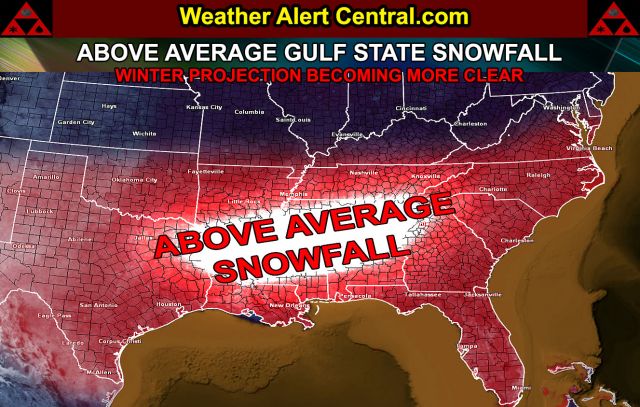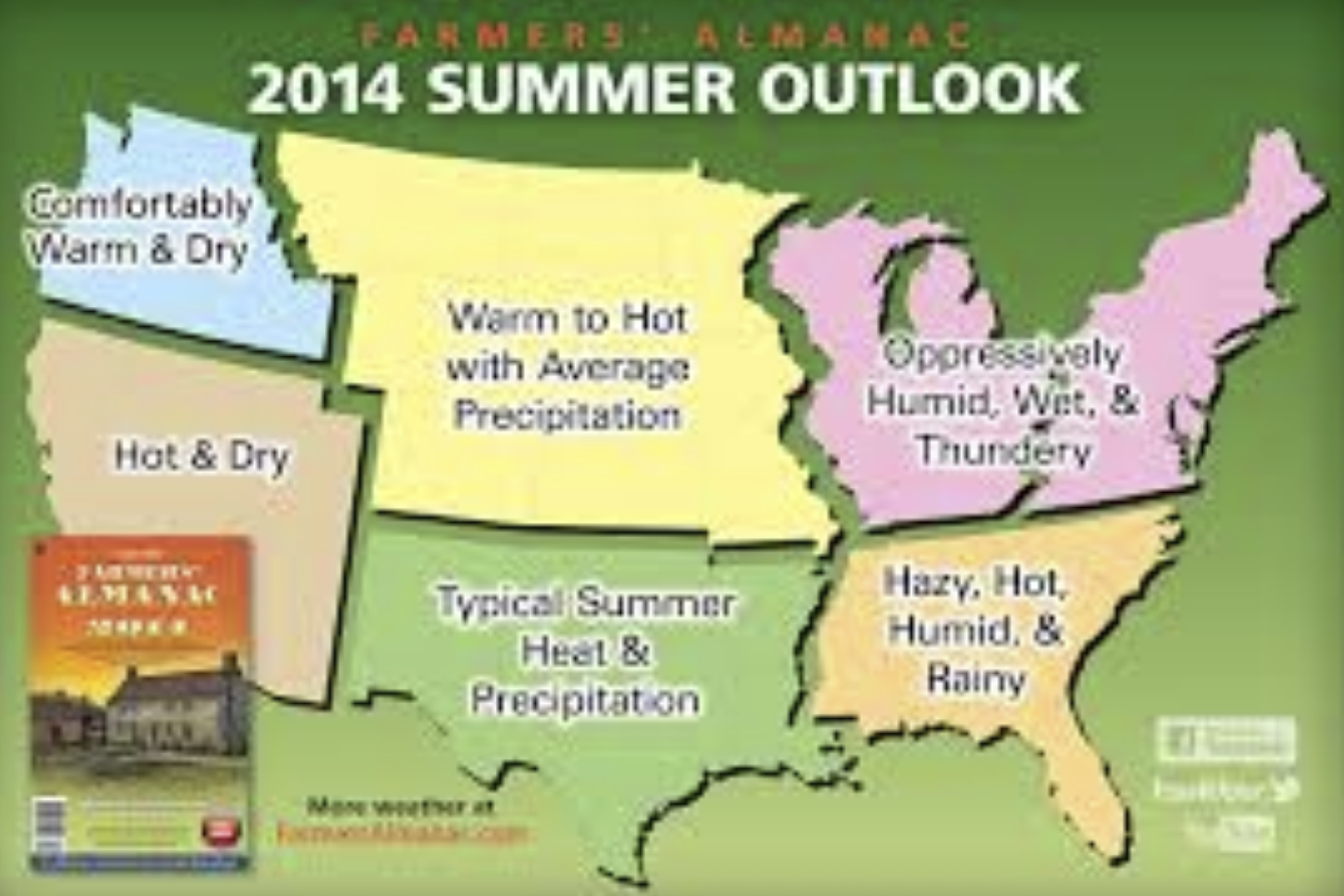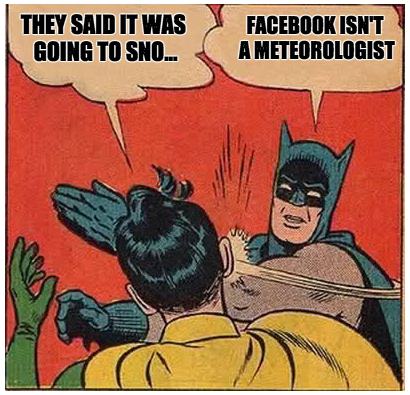Another “phony bologna” forecast is circulating around social media. This isn’t a surprise. Social “mediarologists” are popping up all over the place. It seems like every time one gets called out, another two arrive. With graphics of apocalyptic proportions.
This one claims that this winter will be cold and snowy for the southeast. It looks like this:

Is it true? More on that in a minute.
Weather & Psychology
The real question is why do these forecasts become so popular? Why do the “Snowicane Bliznado” link on facebook get more traction in a community than a “Watch out for 3″ to 6″ of snow and gusty winds” forecast posted by your local television meteorologist?
It stems back to people’s psychology. Because humans, as it turns out, like to share bad news.
From Psychology Today:
“Humans seek out news of dramatic, negative events. These experts say that our brains evolved in a hunter-gatherer environment where anything novel or dramatic had to be attended to immediately for survival. So while we no longer defend ourselves against saber-toothed tigers, our brains have not caught up.
Many studies have shown that we care more about the threat of bad things than we do about the prospect of good things. Our negative brain tripwires are far more sensitive than our positive triggers.”
It’s true! That is why most newscasts warn you about bad drinking water, murders and wars – deep down, it’s what everyone wants to hear.
Another interesting piece of psychology is people respond quicker to negative stimuli. If someone tells you that a tornado is coming, you’re likely to run for the cellar – and call your neighbor. If the same person says it is sunny outside, you wouldn’t likely move. And you probably wouldn’t tell anyone else.
And that is normal. One University of Chicago study found that people – when given a choice – would rather share extreme bad news than extreme good news:
These studies document a tendency to pass along central over extreme news. However, when extreme news arises, not all kinds of extremity are equally favored. In Studies 1 and 2 people were more willing to pass along bad news than equally believable good news. This inclination is particularly striking because it contradicts general tendencies to want to see the world as a stable, controllable place, where good things happen to good people.
It is that response that leads to bogus forecast for a major hurricane gaining so much popularity on social media.
People want to share bad news. And they share bad news faster.
Predictions Have Limits
Well, no one can “forecast” the weather this far out with any accuracy on specifics. The Farmer’s Almanac tries, but they don’t have a very good track record. As much as meteorologists want to help you out, we can’t. And anyone that tries to forecast the weather that far in advance isn’t forecasting. That person is guessing.

This summer is a perfect example. The Farmer’s Almanac prediction is to the right.
In regards to Hattiesburg, Mississippi it whiffed completely. The city has been dry (roughly 4.80″ behind in rainfall) and cool (20th coolest summer on record).
In fact, it could be argued it missed the forecast almost completely. The case could be made that it has been hot and dry in the California, but parts of Arizona and Nevada have been wet.
What meteorologists and climate scientists can offer is a prediction compared to average based on overall weather patterns and historical data. NOAA, for example, offers climate probability graphics. These show for a given span of months what is possible to occur compared to the climatological average.
So, while a weather forecast would say that next Tuesday will be 55 degrees and rainy. The climate probability graphics says, for example, January – the entire month – has a 40 percent chance of below average temperature and a 30 percent chance for above average precipitation.

To shorten things up and make it easier to understand, most meteorologists might say January may be cooler and wetter.
So, What is the Outlook?
According to NOAA, the December, January, February outlook for the southeastern United States shows a mainly normal to slightly below normal temperatures with normal to slightly above average precipitation.
Certain, untrained or uncaring individuals on facebook, twitter, tumblr and the like may see this and suggest that more snow storms are possible. Or they might even say more likely. But that is a stretch.
Yes, cooler and wetter may mean more opportunities for snow. But it may mean more opportunities for very cold rain, too.
While that might not resonate with the fear centers of the brain, making you react and quickly share it with your friends via social media, it is the best climate science can offer.
Any one that offers you more is throwing a dart, blindly, at the wall hoping to hit the bullseye.

